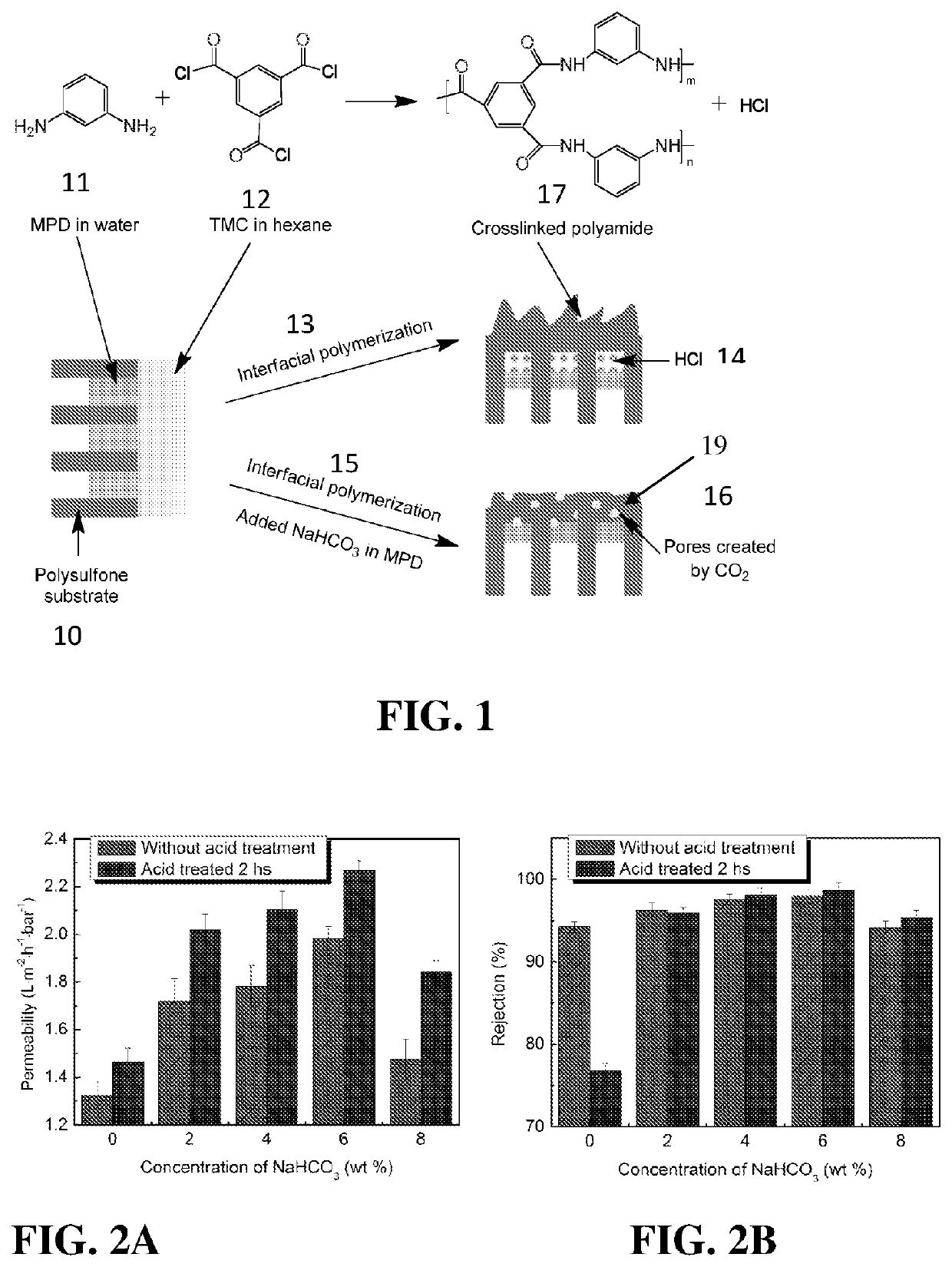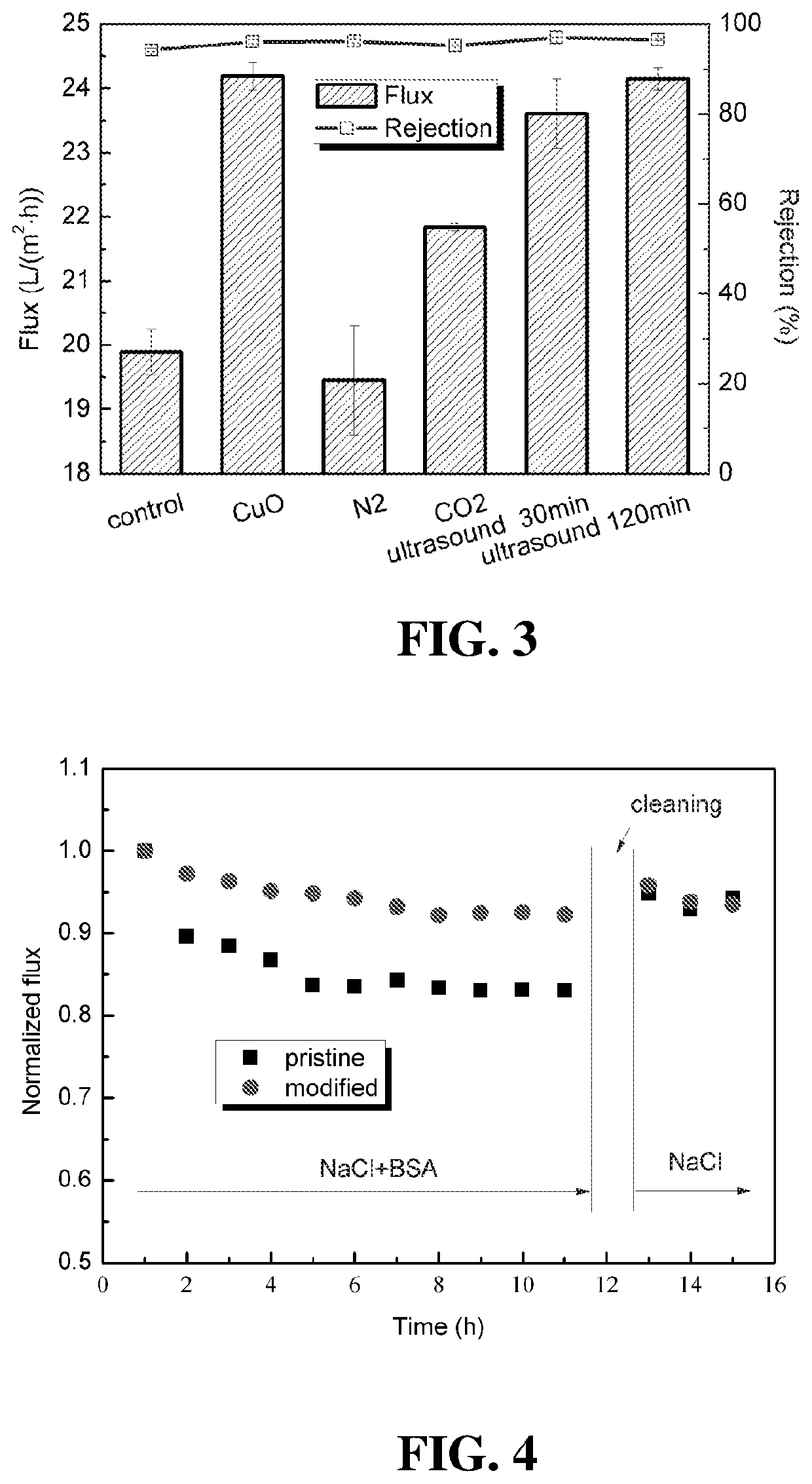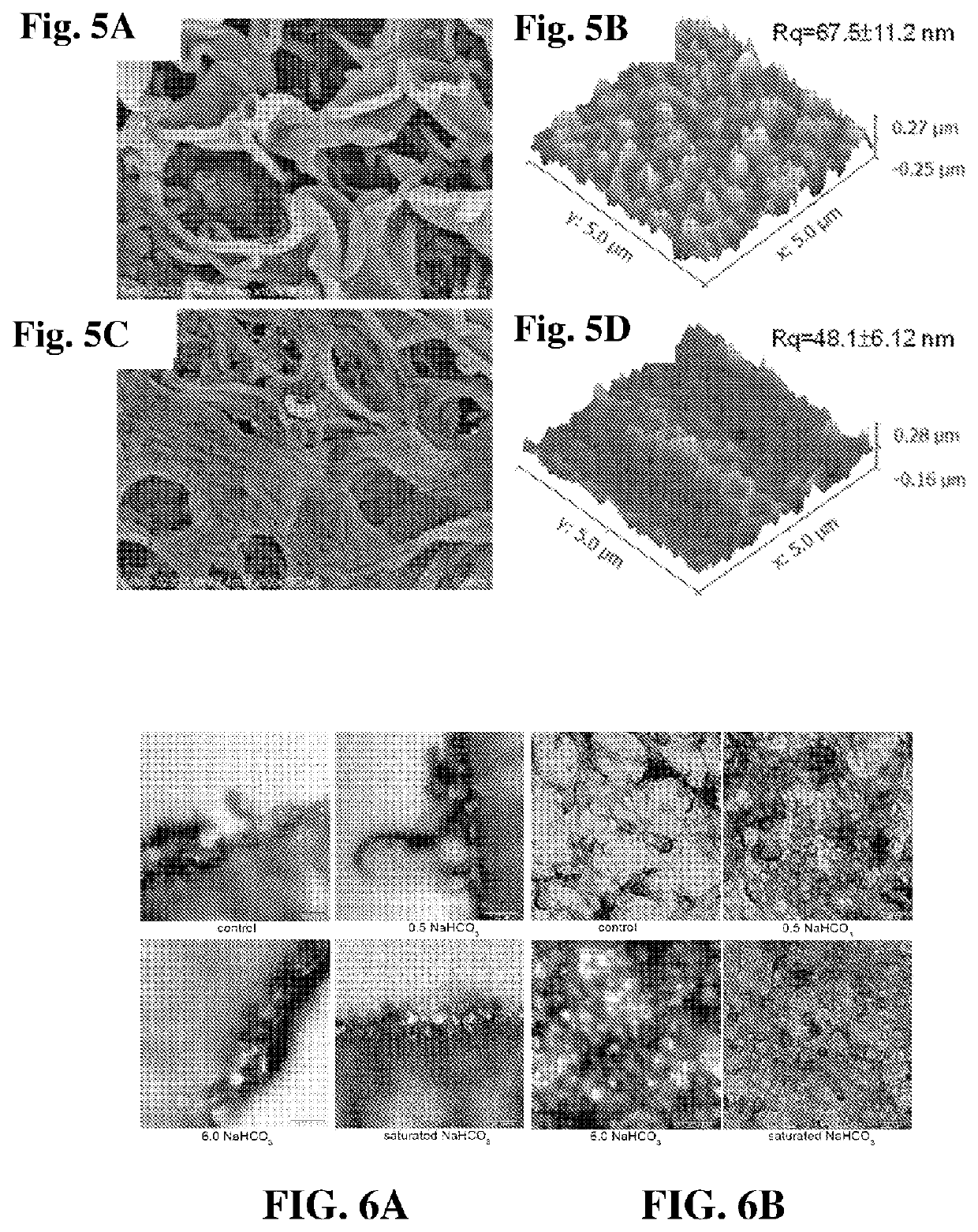Thin Film Composite Membrane with Nano-sized Bubbles Having Enhanced Membrane Permeability, Preparation Methods and Uses Thereof
a composite membrane and nano-sized bubble technology, applied in the field of thin film composite membranes with enhanced membrane permeability, can solve the problems of low water permeability and susceptibility to fouling, and neither of the above-described two methods enhances both water permeability and salt rejection to desired extents, so as to improve the water permeability, salt rejection and antifouling, and reduce the mechanical strength and stability of the membran
- Summary
- Abstract
- Description
- Claims
- Application Information
AI Technical Summary
Benefits of technology
Problems solved by technology
Method used
Image
Examples
example 1
[0036]In order to fabricate a substrate the following process was followed. A polymer solution with a concentration of 15.0 wt. %, was made from polysulfone (PSf) beads dissolved in N,N-Dimethylformamide (DMF) at 50° C. until homogeneous and transparent. This solution was used as casting solution to prepare a porous substrate. The casting solution was cooled down to room temperature and then degassed statically in the same container. Next, the casting solution was spread directly onto a smooth and clean glass plate. The glass plate with the whole composite was immediately immersed in deionized water as a coagulant bath at room temperature for at least 5 min to finish the phase inversion. The polysulfone substrate was then prepared and stored in deionized water.
[0037]In order to fabricate a thin film composite membrane, a certain amount of NaHCO3 is added in a 1,3-phenylendiamine (MPD) aqueous solution with a concentration of 2.0 wt. %, wherein the concentration of NaHCO3 in the MPD ...
example 2
[0040]The method of fabricating a substrate is the same as with Example 1.
[0041]To fabricate a thin film composite membrane, CuO nanoparticles were added into the 1,3-phenylendiamine (MPD) aqueous solution with a concentration of 2.0 wt. %, wherein the concentration of CuO in the MPD aqueous solution is 0.5 wt %. The aqueous solution was poured on the top surface of a polysulfone substrate and allowed to soak for 2 min. Afterward, the excess MPD aqueous solution was carefully removed from the membrane surface with a rubber roller. Then, a 1,3,5-benzenetricarbonyl trichloride (TMC) hexane solution with a concentration of 0.2 wt. % was gently poured onto the MPD-soaked membrane substrate for 2 min, which formed a thin film via interfacial polymerization. Afterward, the hexane solution was drained and the membrane was put in warm water at 50° C. for 10 min and treated with HCl (pH=3.5) for 2 hours. Finally, the membrane was stored in deionized water pending a performance test.
example 3
[0042]The method of fabricating a substrate is the same as with Example 1.
[0043]To fabricate a thin film composite membrane, N2 or CO2 was pressured into the 1,3-phenylendiamine (MPD) aqueous solution with a concentration of 2.0 wt. % at 4 bar in a period of 0-2 h. The aqueous solution was poured on the top surface of a polysulfone substrate and allowed to soak for 2 min. Afterward, the excess MPD aqueous solution was carefully removed from the membrane surface by rolling with a rubber roller. Then, a 1,3,5-benzenetricarbonyl trichloride (TMC) hexane solution with a concentration of 0.2 wt. % was gently poured onto the MPD-soaked membrane substrate for 2 min, which formed a thin film via interfacial polymerization. Afterward, the hexane solution was drained and the membrane was put in warm water at 50° C. for 10 min. Finally, the membrane was stored in deionized water pending a performance test.
PUM
| Property | Measurement | Unit |
|---|---|---|
| pressure | aaaaa | aaaaa |
| temperature | aaaaa | aaaaa |
| concentration | aaaaa | aaaaa |
Abstract
Description
Claims
Application Information
 Login to View More
Login to View More - R&D
- Intellectual Property
- Life Sciences
- Materials
- Tech Scout
- Unparalleled Data Quality
- Higher Quality Content
- 60% Fewer Hallucinations
Browse by: Latest US Patents, China's latest patents, Technical Efficacy Thesaurus, Application Domain, Technology Topic, Popular Technical Reports.
© 2025 PatSnap. All rights reserved.Legal|Privacy policy|Modern Slavery Act Transparency Statement|Sitemap|About US| Contact US: help@patsnap.com



